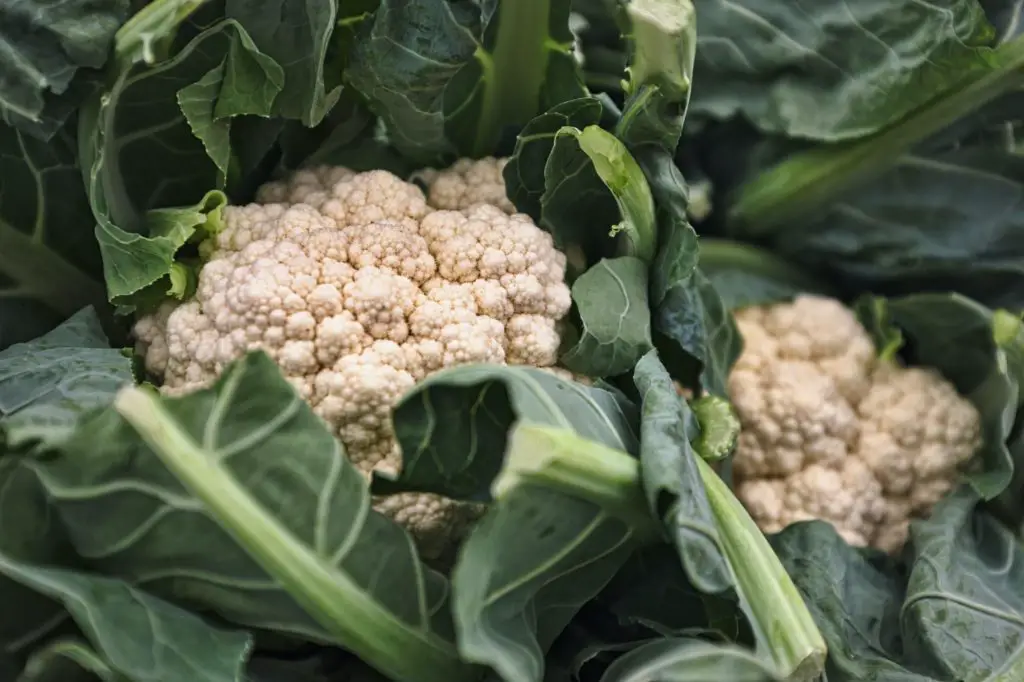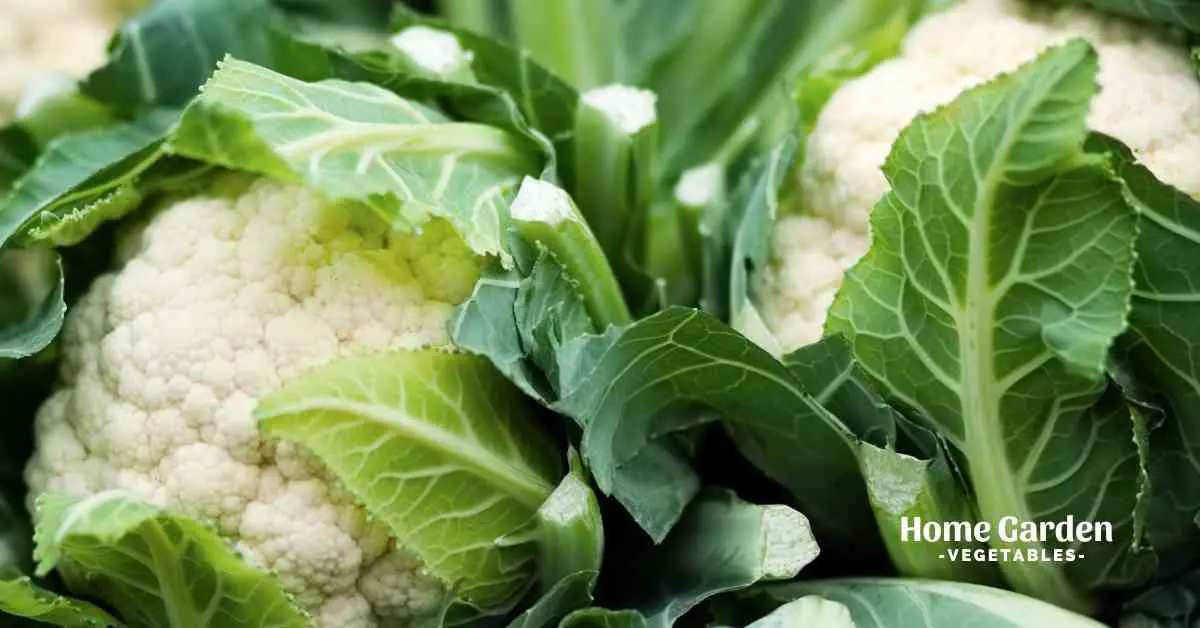I highly recommend growing cauliflowers since they provide gorgeous huge heads that may be consumed fresh or frozen for later use. But how many heads of cauliflower can you obtain from a single plant?

Cauliflower plants normally produce one head per plant that weighs between 11 and 18 oz (300 and 500gms) and measures between 4 and 7 inches in diameter (10 to 18 cm). Cauliflower plants may be encouraged to produce several heads after the first one is harvested by removing the plant’s leaves. The secondary heads are significantly smaller, with a diameter of of around 3 inches (7 cm).
Reader Poll: What online courses would interest you?
After the original head is removed, the secondary heads usually arise 7 to 8 weeks later. Depending on the circumstances, this may be an effective means of producing a second crop. Waiting for a second harvest as summer is nearing is unlikely to provide great quality florets since Cauliflower is one of the more sensitive crops to heat and light. Heat causes them to become yellow and blossom very rapidly, so watch out while you’re planting them.
Is Cauliflower Best Grown In The Spring Or Fall?
In colder months, such as autumn, spring, or even winter if the winters are mild enough, the optimum time to grow cauliflower is during these three months. If you want a late Spring or late Summer harvest of Cauliflower, you’ll need to plant Cauliflower seeds in late Winter or early Summer, respectively.
In moderate winter regions, cauliflower harvests may be prolonged into the winter provided the seeding of the cauliflower is carefully timed. When it comes to cauliflower, the plant must be near to full maturity at the beginning of the cold season.
Subscribe to our newsletter!
Another option is to start seedlings in the early fall. As a consequence, the plant will remain dormant until the next spring, when the weather begins to warm up again. As a result, fresh cauliflower will be more readily available throughout the year thanks to an early spring crop.
Cauliflower Growing Techniques
When it comes to Brassicas, Cauliflower is a difficult plant to cultivate, with its closest cousin being Broccoli in the family. As a result, the quality of the head and the yellowing of the florets are greatly harmed by its inability to withstand high temperatures.
For Cauliflower seedlings to grow, they may either be placed directly into the ground or into seed starter trays. There are many advantages to using seed trays, but I find them to be the most convenient. The first reason is that planting in trays protects seedlings from pests like snails and slugs, which may cause damage to the plants.
In addition, since seeds may be started earlier in winter, you’ll get a harvest that’s ready sooner. Using a heated propagation tray may be an option if you live in a chilly location and find it difficult to regulate the temperature.
For the third reason, the cauliflower is grown on trays rather than directly in the ground. While you’re waiting, you may let something else grow in the garden in its place. In the summer, when your beds are already full with other crops, this is very helpful.
Planting in seedling trays requires seed raising mix, which you can get from your local garden shop or get from Amazon for home delivery. At a depth of 1 to 2 centimeters (0.5 to 1.25 inches), 2 to 3 seeds should be placed in each cell.
Calculate how many seeds you’ll need by planting twice as many as you anticipate you’ll need. In this way, you’ll be able to choose just the finest seedlings and replace those that are damaged by slugs and snails, making it easier to maintain your garden.
To keep the soil wet, they should be irrigated often while they are in the trays. In order to protect them from strong downpours, it is advisable to use a spray gun rather than the watering can.
The Gardening Of Seedlings
Cauliflower seedlings typically take between four and six weeks to grow big enough to be transplanted into the garden. It is recommended that the seedlings be placed at least 7°C (45°F) apart when they are planted in the garden.
Cauliflowers do best in a location that receives at least six to eight hours of direct sunlight each day. As a rule of thumb, the soil should be well-drained and rich in organic matter. Add a lot of compost and organic matter to the soil if it’s deficient in nutrients. No-dig soil preparation is my preferred method since it is fast, simple, and decreases the amount of time spent working in the garden. For more information, go here.
After they’ve been put out for the first time, the seedlings are most vulnerable to pests like snails and slugs. It is recommended that snail pellets are sprinkled around the seedlings. Cloches may also be used as a physical barrier. Plastic milk cartons with the bottoms cut off may be used to make this kind of Seedling
Cauliflower Maintenance
Cauliflowers are a relatively low-maintenance crop once they’re established. Keeping the soil wet is essential, as is watering on a regular basis. In addition, it’s a good idea to remove any yellowing lower leaves since they don’t support the plant and might allow pests to get inside.
To keep them from yellowing, they must be covered as soon as the head starts to develop. To keep out light, use clothes pegs, twine, or rubber bands to bind the leaves around your head like a sombrero.
Some types are self-blanching, so you don’t even have to bother. The heads of these blanching types are naturally covered with leaves.
Conclusion
Last but not least, buttoning is more prevalent in early maturing cultivars than in later maturing cultivars. The plants should be adequately moistened without being drowned. Young plants should be mulched to keep weeds at bay. Expose seedlings to longer and longer durations of sunshine after a few days or possibly a week in the shade to aid in their acclimatization. Avoid stressing the plants by transplanting them on a cloudy, cold day or in the late afternoon. Using the manufacturer’s instructions for fertilizer application while transplanting, fertilize the plants after they have established themselves with a side dressing of nitrogen-rich compost.

